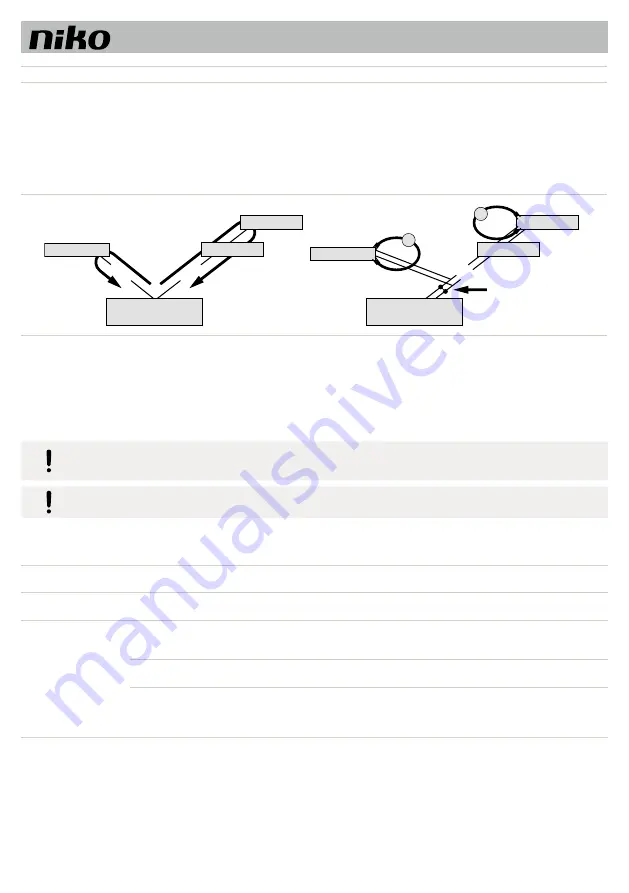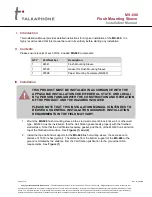
41
EN
10-35x
Principle of line resistance
Measuring line resistance
No external unit, internal unit or function extension shall have a longer
distance from the power supply & control units than 8 Ω.
Perform measurement:
Switch off 230 V / 50 Hz of the power supply & control unit.
Connect a/b short circuit to the power supply & control unit.
All other devices do not disturb the measuring process and can remain
connected.
Measure the a/b resistance of the last internal or external unit on the line,
remove the short circuit.
Repeat on P/M and a/b to measure the line resistance.
Short circuit a/b here
a/M
Internal unit
Internal unit
Internal unit
Internal unit
b/P
Power supply
& control unit
Power supply
& control unit
External unit
External unit
Ohm
Ohm
maximum 20 Ohm
maximum 20 Ohm
a/b
, P/M
a/b
, P/
M
20 Ω rule:
Distance from bus power supply to the farthest external or internal unit:
•
max 160 m at a diameter of 0.6 mm,
•
max 280 m at a diameter of 0.8 mm
12. CLEANING
ATTENTION ! Damage to the device or malfunction due to short circuits and corrosion.
Water and detergents seeping into the device, may cause short circuits and corrosion of electronic com-ponents.
Prevent water or detergents seeping into the device.
ATTENTION ! Damage to the surface of the device
Do not use aggressive or abrasive detergents to clean the surface.
Clean the external unit with a dry or slightly damp cloth.
Remove stubborn dirt using a pH-neutral detergent.
Plexiglas
We recommend cleaning the plastic with an antistatic detergent for
plastic, to maintain the dust-preventing function as long as possible.
Aluminium
The anodised surfaces can be cleaned using mild maintenance products.
The surfaces are self-cleaning.
Stainless steel
Fingerprints and grease residue especially can have an aggressive effect on stainless steel surfaces.
Regular maintenance will ensure the external unit’s appearance remains unchanged and makes it easier to keep the surface
clean.
polished surfaces
Detergents such as abrasive cleaning agents, steel wool or similar
abrasive products may not be used on polished surfaces.
polished / brushed surfaces
Polished / brushed surfaces must always be cleaned in the same
direction it is polished or brushed, to avoid visual changes.
After cleaning, the stainless steel surfaces must always be
rubbed dry to remove water stains or detergent residue.












































